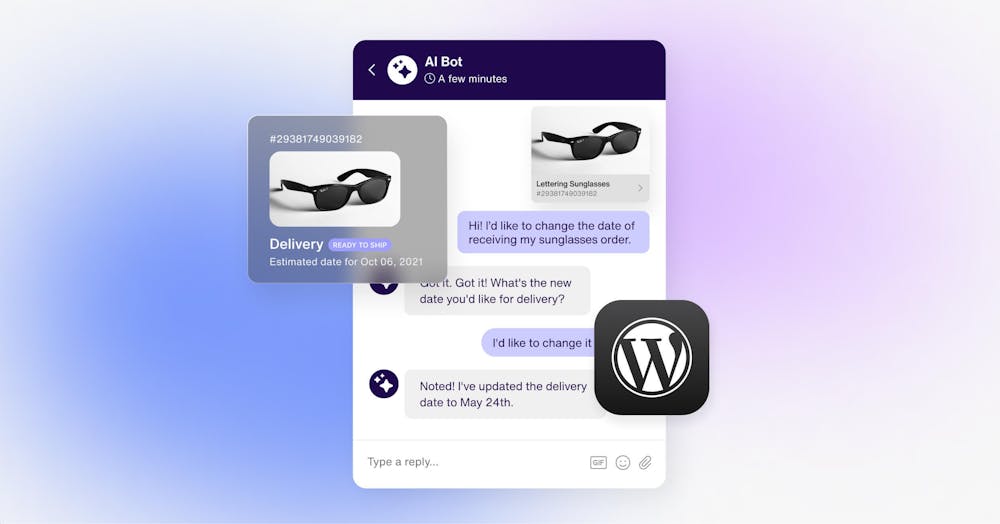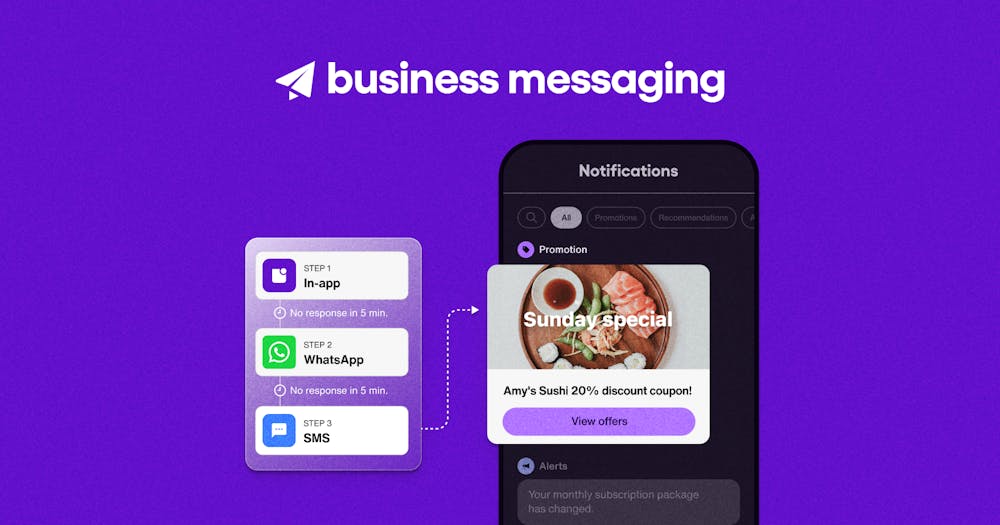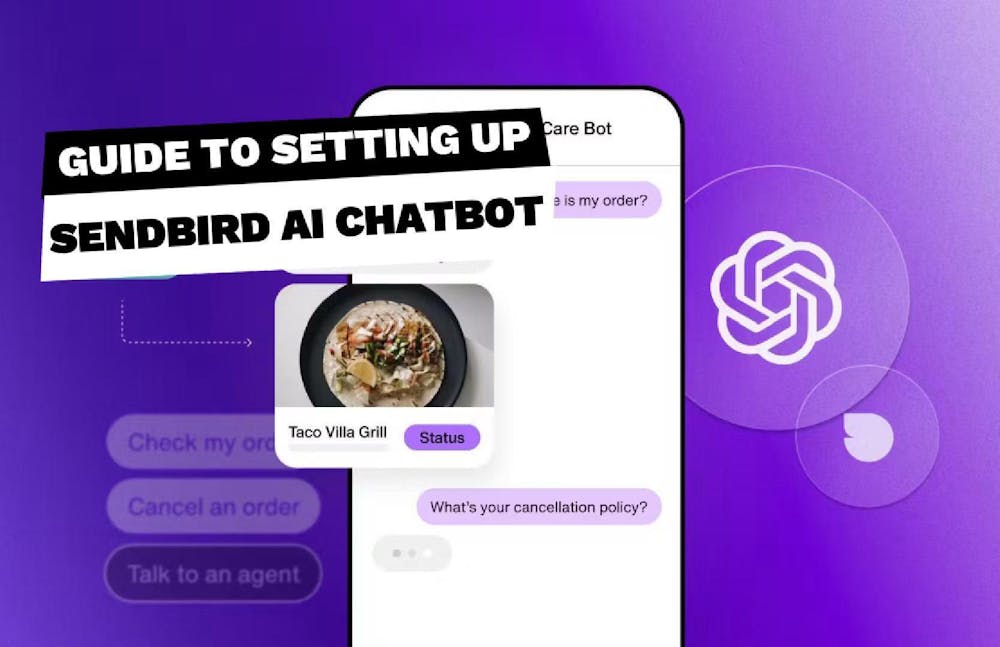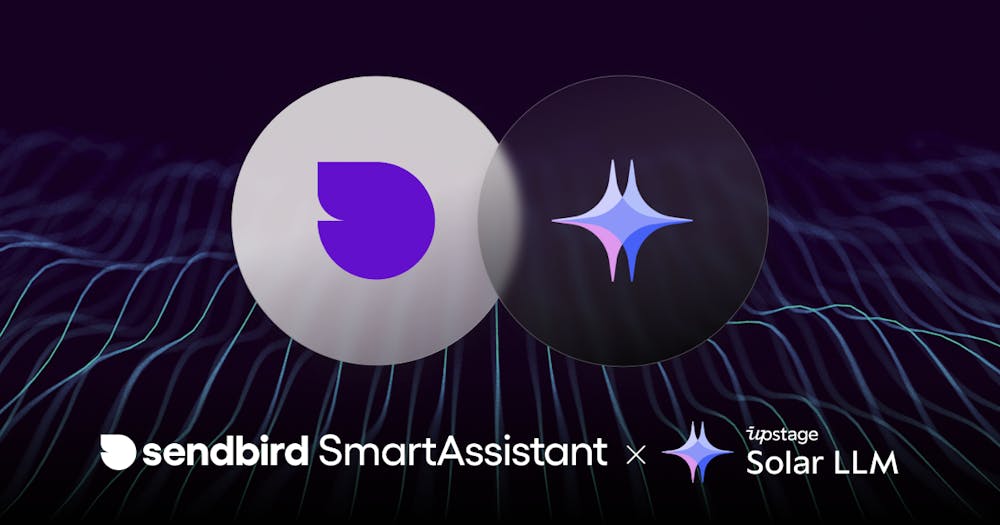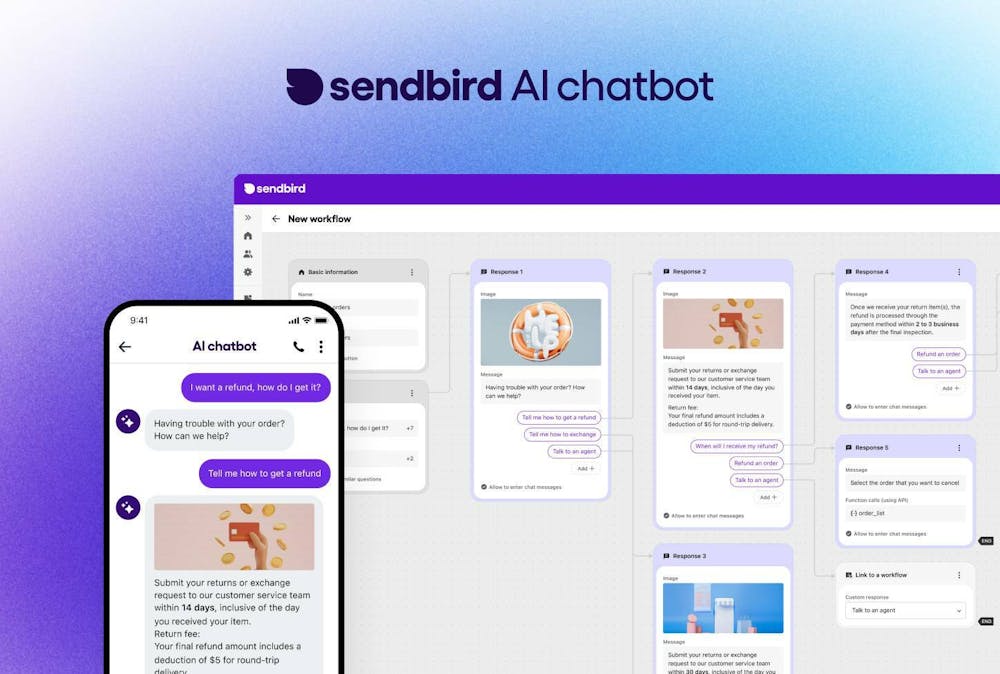Guide to Building the Best Multilingual Chatbot | Sendbird
What is a multilingual chatbot?
A multilingual chatbot is an AI-powered tool that seamlessly adapts to diverse languages, enhancing global communication and fostering inclusivity for businesses.
In the global business arena, linguistic diversity is a game-changer. A multi-lingual approach breaks communication barriers, expanding customer reach and fostering inclusivity. AI chatbots, armed with language processing capabilities, effortlessly bridge these gaps. They adapt to diverse languages, providing customers with a personalized and seamless experience. This not only enhances customer satisfaction but also positions businesses for success in an interconnected world, where effective communication knows no linguistic bounds.
Sendbird AI Chatbot emerges as a game-changer, effortlessly facilitating the integration of a multilingual chatbot.
Meet the multilingual chatbot – your go-to language buddy in the digital realm. Powered by Chatbot API, this chat widget rocks whether you're shopping with a shopping bot, managing finances with a banking chatbot, or just on the move with a travel chatbot on your mobile. It's your linguistic sidekick, making every interaction a breeze! 🌐💬
Key Considerations for Multilingual Chatbot Development
- Language Detection: Utilize chatbot APIs that offer robust language detection capabilities to identify the language of incoming messages accurately. This enables the chatbot to respond in the appropriate language, providing a personalized and user-friendly experience for each customer.
- Translation Integration: Integrate translation services into your chatbot using chatbot APIs like Google Translate or Microsoft Translator. These APIs allow the chatbot to translate messages from one language to another in real-time, facilitating seamless multilingual communication between users and the bot.
- Content Localization: Customize chatbot responses and content to cater to the cultural nuances and preferences of different language-speaking audiences. Leverage chatbot APIs to dynamically generate localized content based on user demographics and preferences, ensuring relevance and resonance across diverse markets.
Method 1: Use the system prompt to ensure the bot replies in the same language as the user input

Method 2: Use the system prompt for source if you want the bot to reply based on the specific sources


Benefits of using a multilingual chatbot
Global Reach
Multilingual chatbots enable businesses to reach a global audience by communicating in multiple languages. This helps in expanding market reach and connecting with diverse customer bases.
Enhanced User Experience
Multilingual chatbots revolutionize the user experience by providing personalized and familiar communication environments tailored to users' preferred languages. This customization fosters a sense of comfort and trust, leading to higher levels of user satisfaction and engagement. With chatbot API seamlessly integrated, businesses can ensure smooth and natural interactions in any language, enhancing the overall user experience and leading to higher customer satisfaction.
Increased Engagement
Speaking in a user's preferred language is key to driving engagement and encouraging interaction with multilingual chatbots. By accommodating users' language preferences, businesses can establish rapport, build trust, and foster deeper connections with their global audience. This increased engagement translates into higher conversion rates, improved customer loyalty, and more effective communication strategies.
Improved Accessibility
Multilingual chatbots democratize access to information and services by catering to users who may not be fluent in the business's primary language. This inclusivity ensures that a wider audience can benefit from the chatbot's capabilities, regardless of their linguistic proficiency. With chatbot API integration, businesses can deliver seamless and accessible communication experiences to users worldwide.
Cost-Efficiency
Automating support through multilingual chatbots offers a cost-effective solution compared to hiring and training human agents proficient in multiple languages. By leveraging chatbot API technology, businesses can handle high volumes of queries simultaneously, offering efficiency, scalability, and significant cost savings in customer support operations.
How to build AI chatbot for your business
If you’ve found yourself asking: Can I create my own ChatGPT chatbot on mobile or website?
You can, easily, with Sendbird’s ChatGPT capabilities.
With the introduction of ChatGPT-powered chatbots by Sendbird, businesses can now engage state-of-the-art technology to build custom ChatGPT chatbots that revolutionize the customer experience.
GPT AI takes chatbot interactions to a new level with human-like and personalized interactions. The experience improves user engagement and satisfaction, which drive applications' top-line revenue growth. In addition, cloud-based automation boosts operational efficiency with 24/7, scalable, and global availability.
With Sendbird's new ChatGPT integration and chatbot API and chatbot UI, you can now build your own ChatGPT chatbot in minutes.
Anyone can do so with zero coding experience in the dashboard, and developers with just a few lines of code using the Chatbot API of Sendbird's platform. If you need to embed ChatGPT chat in your app, build a quick proof of concept to get used to our simple chat APIs.
Once ready to turn on the ChatGPT chatter in your app, start a 30-day free trial.
Now go have fun building a chatbot with ChatGPT! 🤖 💬






